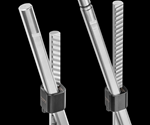Expanded Air Poppet Valve Series Supports Molded Part Ejection
CUMSA expands Air Poppet Valve series with a smaller size dimension and a first-time size offering in inches.
Source | CUMSA
CUMSA has added two new sizes of air poppet valves to its VA - Air Valve series for plastic injection . The new diameter sizes include a 3-mm air poppet and a ½" air poppet specifically developed for the North American market.
The new dimensions enable more user options so the air poppets can be applied in various types of molds. In addition, multiple units can be installed in one mold.
Air poppet valves are designed to break vacuums which are created when molding thin-walled or deep-drawn parts. The VA assists in removing air formed inside a mold cavity. Air poppets are also engineered to assist with molded part ejection to prevent the molded part from sticking to the mold.
The VAs are made of hardened stainless steel for durability, precision and smooth performance. The internal mechanical stopper facilitates limited opening and long-life endurance.
The optimal operating air pressure is between 60 and 90 psi, and the maximum mold temperature rating is up to 150°C (302°F).
Air poppets’ round shape and press-fit installation make it easier to use and mount. It’s recommended to use a plastic or rubber hammer when fitting the VA into the fitting hole to avoid damaging the part.
Related Content
-
MPM’s Second Act: Keeping Injection Molding, Moldmaking in the Midwest
Larry Austin’s 35 years at a highly successful injection molding company inform much of what he does and doesn’t wan






